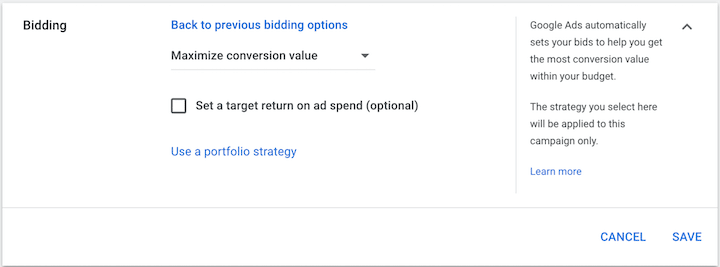Being a business owner, product, and service seller with an online presence, you have always wished to enhance your PPC campaigns. There are numerous paid search indicators, but the Return On Ad Spend is one of the most beneficial and underutilized (ROAS).
The goal of web advertising is to increase sales for your company.
A paid search click typically costs more than a display or paid social click, but if the click results in a paying customer, it’s worthwhile to have. ROAS proves its worth here.
You can utilize ROAS to connect the dots and determine which component of your sponsored search advertising merits a larger budget and which needs improvement.
You need to find the best PPC services for a quick return on ad spend (ROAS), to get professional and trusted services to secure your time and investment.
Understanding Return On Advertisement Spend (ROAS)
The Return On Advertisement Spend (ROAS) ratio shows how much money you make for every dollar you spend on advertising. It makes it crystal evident whether investing money in a campaign is worthwhile.
ROAS is calculated by dividing campaign-related revenue by campaign-related costs, which is a fairly simple formula.

One thing to keep in mind is that ROAS is not the same as return on investment (ROI), which accounts for profit margins and other costs besides the money you invested in the campaign. While ROI gauges the effectiveness of the overall strategy, ROAS gauges the efficiency of certain initiatives.
Why Google Ads ROAS is Important
E-commerce enterprises choose where to spend their ad budget and how to make it effective day by day based on the findings and regular observation of ROAS.
ROAS is important because it assesses the effectiveness of advertising campaigns and how they affect an online store’s bottom line.
Any eCommerce company that wants to improve the effectiveness of its Google AdWords and website conversion rate must do this.
It’s crucial to consider measures to increase ROAS when calculating it, such as raising your website’s conversion rate or seeing more people add items to their shopping carts.
By tracking ROAS across all campaigns, future budgets, marketing strategies, and marketing plans can be developed.
For instance, within platforms like the Google Ad Exchange, ROAS can provide insights into how different advertising bids and placements are performing.
Google Ad Exchange, being a real-time marketplace for buying and selling ad space, offers detailed performance metrics that can help advertisers understand the impact of their ads.
By calculating the revenue from your ad campaigns that were brought about by sales from your website, ROAS enables marketers to analyze their Google performance better. Hence understanding the marketing metric ROAS is drastically important before spending.
How Soon the Google Ads ROAS Will be Visible

If you are a business owner seeking to begin PPC (Pay Per Click) advertising on Google?
Or maybe you are an established brand looking to switch PPC managers because your advertising isn’t yielding results right away, you should choose an effective ad channel that takes to operate before you start.
A successful Google ad campaign will mature over at least three months, and it will take another four to twelve months for it to solidify. If you go for the best PPC services for a quick return on ad spend (ROAS), you will get proven results.
Optimizing Google Ads for the First 3 Months
It is understandable as the three months may seem like a lifetime, especially after spending a lot of time and effort creating a Google ad.
You need results right now and want to know that your investment is worthwhile. The secret to making a great Google ad is to be patient.
Consider the three months as a maturation phase for the Google ad you made to stay motivated. The advertising campaign you have started will only get better with time.

PPC service providers follow the steps to make your advertising campaign as effective as possible during the three months.
Data Gathering
At the start of the campaign, providers conduct an extensive audit of the client’s existing digital presence, competitors, and target market. This includes analyzing the client’s past PPC efforts if available, and setting benchmarks for key performance indicators.
Effective Keyword and Targeting Adjustments
Service providers use various tools to conduct comprehensive keyword research. This step is crucial to identify both high-volume keywords and niche terms that can attract targeted traffic. They also consider keyword relevance, competition, and cost.
Based on the initial data, PPC experts refine the audience targeting options to ensure ads are displayed to the most relevant users. This includes adjusting for demographics, interests, geography, and even the time of day or week. Such refinements help reduce wasted spend and improve overall campaign performance.
Growing and Focusing on Results
Once certain keywords, ad copy, or targeting strategies prove successful, the campaign managers will scale these elements. This could mean increasing budgets for high-performing ads or expanding the reach of successful targeting settings.
Setting a Target ROAS
The objective for a Google Ads campaign is the goal ROAS. There is no precise revenue goal behind your ad campaigns since, without a target, Google will try to acquire as many sales as it can within a given budget.
Goals are necessary so that work can be done as efficiently as possible to achieve the required business objectives and produce the desired return on investment (ROI).
We want to ensure that there is a purpose behind every campaign and spending on Google Ads, we need the desired ROAS goal for each campaign or ad group. Without following a proper strategy, we will be wasting the investment.
Setting a Target Return On Google Ads:
By navigating to the Campaign Options and choosing Maximize Conversion Value under “Bidding” in your settings, you may establish a target ROAS for your Google Ads campaigns.
You must check the box labeled “Set a Target Return on Ad Spend” here. You can now enter a target percentage return that aligns with your ROI objectives to determine your target ROAS.

Setting a Target ROAS for Campaigns
What ROAS objective needs to be set for your campaign? There isn’t one target that applies to all organizations; instead, this target should be based on the goals and objectives of your company.
But what constitutes a reasonable ROAS target?
Starting with a target of 100% or higher will allow you to optimize toward the target in Google Ads, which entails having enough impressions and clicks to work with.
Not enough data makes it difficult to make any modifications or improvements, so you need to keep that in mind. For it to function effectively, you’ll need at least 15 conversions in the last 14 days and at least 7 conversions in the recent week.
ROAS is again a key metric that can be used to assess whether or not your Google Ads campaigns are profitable and whether you should keep running them in the future.
Conclusion on Calculate ROAS Google Ads
ROAS is mistakenly thought of as an e-commerce indicator, it is one of the most beneficial and least utilized paid search metrics available.
Instead of using an ineffective strategy and waiting for long periods, seek the best PPC services for a quick return on ad spend (ROAS).